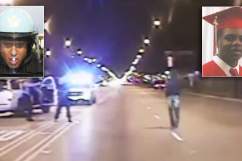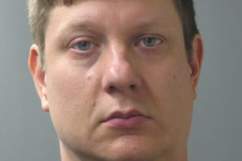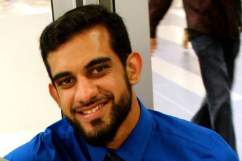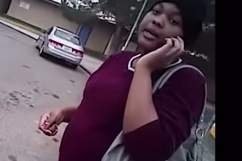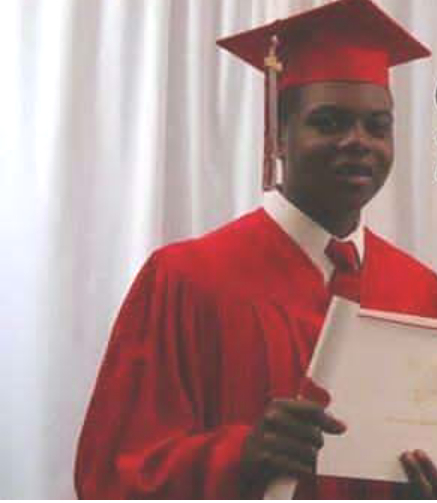
Laquan McDonald (Family photo)
The city of Chicago has settled a $5 million lawsuit with the family of a black teenager fatally shot by police in October 2014. The officer involved in the shooting has not been named or charged, but has been suspended pending an investigation.
Laquan McDonald, 17, was killed while holding a knife. He was suspected of having committed a robbery prior to the shooting, according to the Chicago Tribune.
The settlement with McDonald’s family is the result of police cruiser dash cam footage that shows the shooting, the Tribune reported. The video will not be released by the family as part of the settlement, which was approved by the Chicago City Council on April 15.
The city had been fighting the release of the video, but on November 19, a Cook County judge ruled the video must be made public by November 25. The city will not appeal the ruling, the Chicago Sun-Times reports.
Video of the shooting will be released Tuesday. You can watch the video here.
The officer in the shooting has been identified as 37-year-old Jason Van Dyke, who has been a Chicago police officer since 2001. A federal jury in a civil case found Van Dyke committed excessive force while handcuffing a suspect in 2007. Read more about that case here.
Van Dyke has been charged with first-degree murder.
Here’s what you need to know:
1. He Was Shot 16 Times by 1 Officer Who Was 12-15 Feet Away
The family’s settlement with the city prohibits them from releasing the dash cam video to the public, but the family’s attorney, Jeffrey Neslund, has seen the video. He described it to the Chicago Sun-Times.
Neslund told columnist Mary Mitchell that the video shows McDonald walking west in the middle of Pulaski Street with a knife in his right hand. Two officers jump out of a SUV with their guns drawn. McDonald can be seen continuing to walk west, with a lane of traffic separating him from the officers. One of the officers begins shooting from about 12
to 15 feet away from McDonald. The teen is spun around by the first shots and the officer continues firing. McDonald falls to the ground and an officer kicks the knife out of his hand.
According to the Tribune, officers began to follow McDonald after he was allegedly trying to break into vehicles at a trucking yard. The officers followed him for nearly a half-mile, through a Burger King parking lot and onto a busy street. The officers were waiting for backup units with Tasers and tried to corral McDonald to keep him away from passers-by, the Tribune reported.
The caller reporting the attempted break-ins at the trucking yard had told police McDonald was armed with a knife and had threatened him with it. He also punctured a tire of a police vehicle that was following him and struck the vehicle’s windshield.
The SUV carrying the police officer who fired the fatal shots arrived as the officers were trying to surround McDonald.
The family says the video shows McDonald walking away from the officers. According to the Tribune, one of the reasons the city settled the lawsuit was because the family’s attorney would have questioned why only one officer of the five at the scene opened fire.
The officer has claimed he feared for his life, and the police union claimed McDonald lunged at the officer with a knife, though that is not seen on video.
The autopsy showed that McDonald was hit 16 times, including in the chest, neck, back, arms and leg. It also showed that McDonald had PCP in his system at the time of the shooting, but a city alderman said that shouldn’t have an impact on the case. According to the Sun-Times, Carrie Austin said:
How would they [police] have known that? They would not have known that. You’re gonna look at them and know what kind of substance they have in them? I could have taken a Bayer aspirin. How would you know it? Even though it’s an illegal substance. So what? That particular [drug] could have gotten him to a level of cohesiveness or coherentness. Some people are extremely aggressive. Some could be less aggressive or keep them at a medium.
The full autopsy was released via a Freedom of Information Act request. Read it below:
2. Police Detectives Have Been Accused of Deleting Security Footage From Near the Shooting Scene
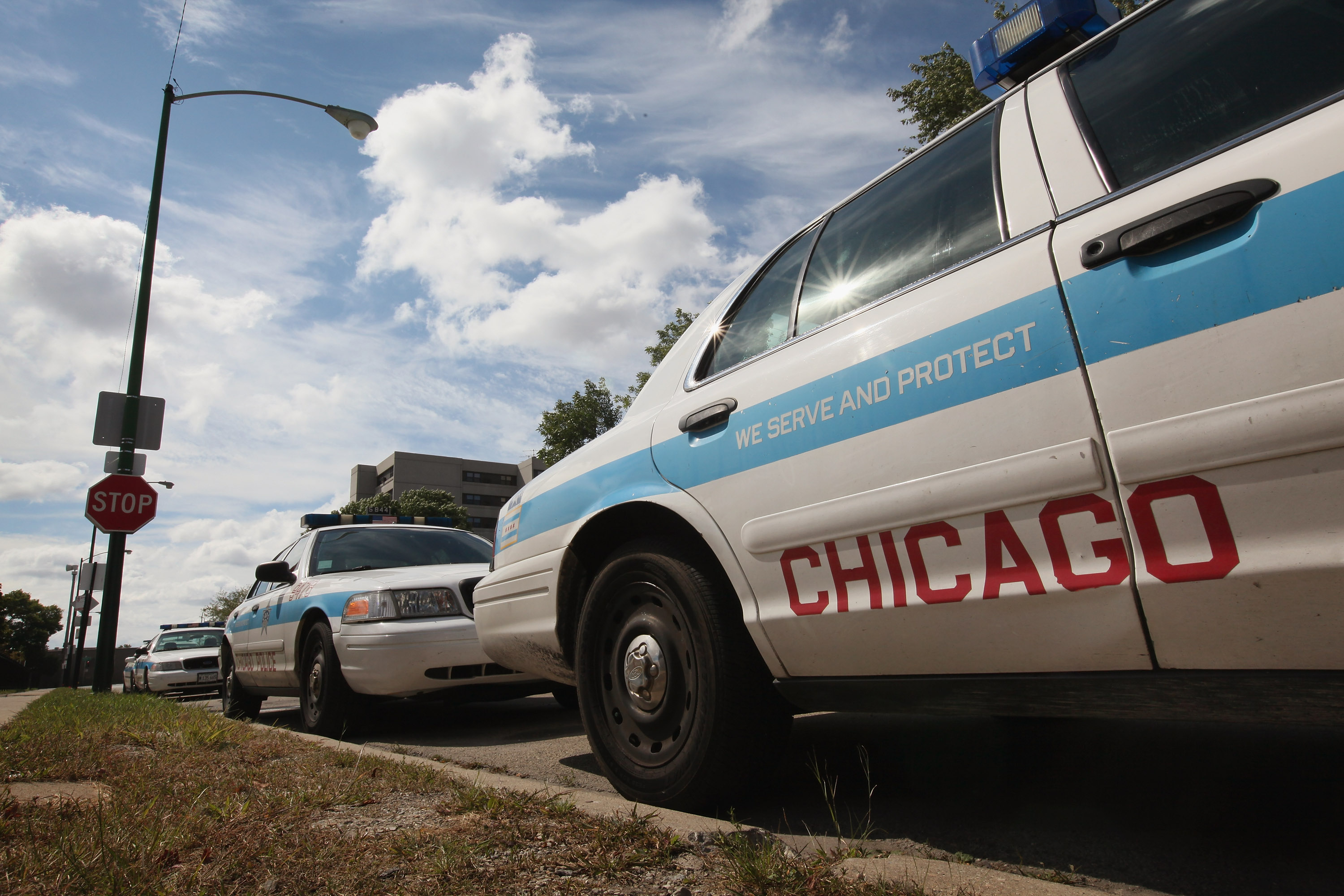
(Getty)
A district manage for a Burger King restaurant located less than 100 yards from where McDonald was shot told NBC Chicago that detectives deleted 86 minutes of security camera footage after the shooting. The missing footage is of the outside of the restaurant from 9:13 to 10:30 p.m. McDonald was shot at about 9:50 p.m.
Jay Darshane, the Burger King manager, said four or five police officers wearing blue and white shirts entered the restaurant and asked to view the video not long after the shooting. They were given the password to the equipment and after three hours, they left. An investigator from the Independent Police Review Authority came to view the footage the next day and found that 86 minutes were missing.
The IPRA, the unit investigating the shooting, told NBC, “We have no credible evidence at this time that would cause us to believe CPD purged or erased any surveillance video.”
But the manager believes it was deleted, saying, “We had no idea they were going to sit there and delete files. I mean we were just trying to help the police officers.”
An attorney who represents another Chicago police shooting victim’s family said the IPRA is not credible.
“I don’t regard them as independent and I don’t regard them as investigators,” Candace Gorman, who represents the family of Divonte Young, told NBC. “Their policy is to exonerate any officer that’s involved in a shooting and the officers all know it. They have complete impunity, and they know they will never be called on the carpet by the city of Chicago or the so-called independent investigative unit.”
In the Young case, the officer said he feared for his life because he believed Young, a 20-year-old Chicago man, was armed. But police didn’t find a weapon. The IPRA found the 2012 shooting to be justified, saying in its report, “”No weapon was found on or near the Subject so it was surmised that a civilian had removed the gun.”
The IPRA told NBC Gorman “could not be more wrong,” and their investigations are done “fairly, objectively and thoroughly,” based on evidence. The city is currently conducting an internal audit of the IRPA to determine “the accuracy and completeness of IPRA’s reporting” on officer-involved shootings.
The McDonald shooting was captured on dashcam video that has not been made public, and the Burger King video would not have shown the shooting itself. But the attorneys for McDonald’s family believe it could have shown what led up to the shooting.
“Our first time down at the Burger King restaurant when we started talking to employees, watching the Burger King video, when we realized video had been deleted, or is missing, absolutely we knew something was up,” said Jeff Neslund, an attorney for McDonald’s family.
3. Van Dyke Is the First Chicago Police Officer to be Charged With First-Degree Murder in an On-Duty Shooting
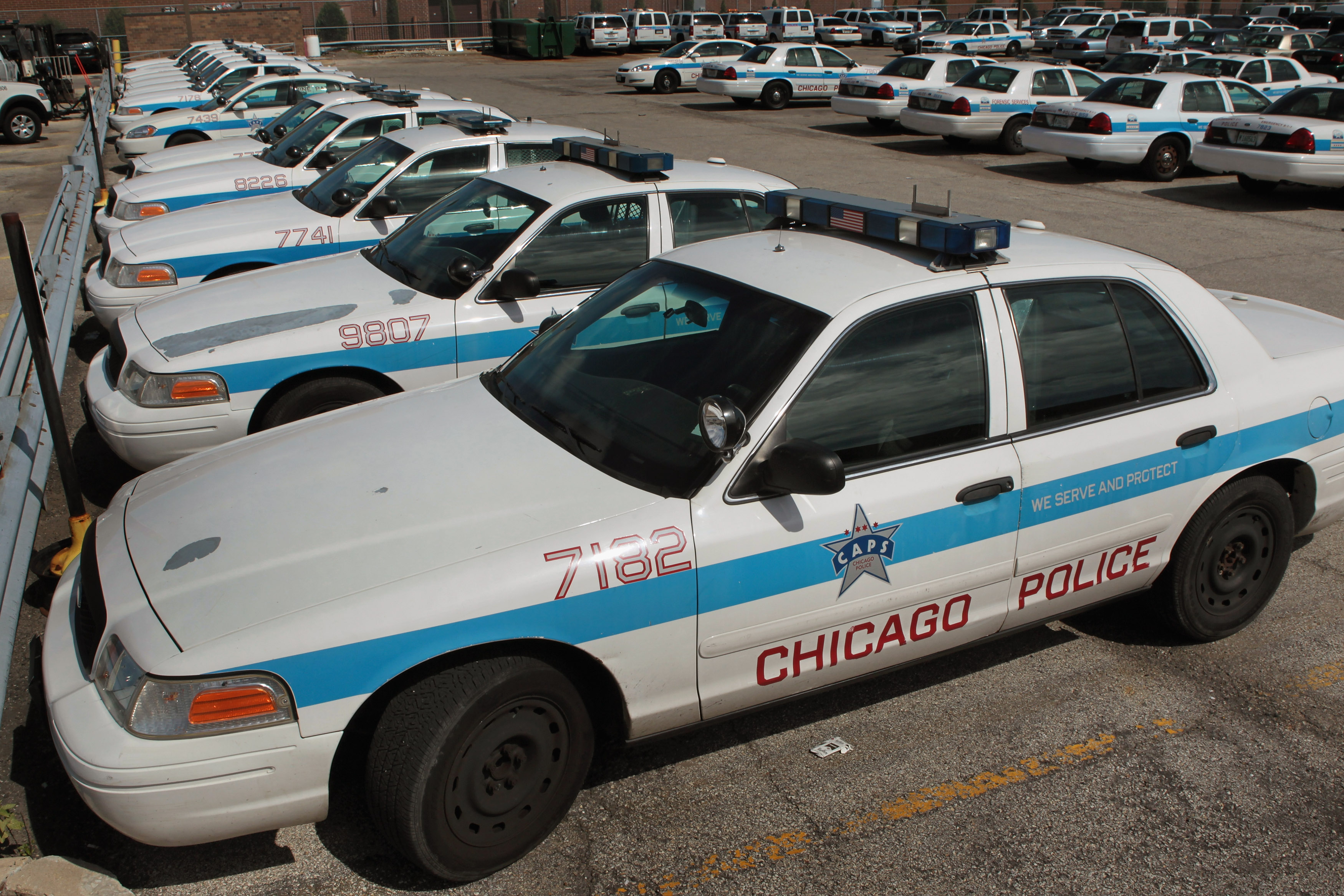
(Getty)
Van Dyke is the first Chicago police officer charged with first-degree murder in an on-duty shooting. A federal civil rights investigation is still ongoing.
You can read the charges against Van Dyke below:
Van Dyke was the only officer among five at the scene to fire at McDonald. He opened fire just six seconds after getting out of his vehicle, while the other officers tried to surround McDonald, while waiting for a Taser.
An attorney for Officer Van Dyke says his client followed police procedure and didn’t commit any wrongdoing, saying he felt he was in fear for his life. He has also said he is concerned the video could cause someone to do harm to Van Dyke, because they will not understand the context of what it shows.
“The video is graphic, disturbing and difficult to watch, as any video of a man being shot to death would be,” Herbert told the Tribune. “It’s impossible from viewing the video to determine exactly what my client was experiencing at the time in which he fired the shots. … It’s not showing from his eyes, which is an important distinction.”
The police union also says Van Dyke was in fear for his life.
“The officers are responding to someone with a knife in a crazed condition who stabs out tires on a vehicle, on a squad car,” Fraternal Order of Police spokesman Pat Camden told the Chicago Tribune. “You obviously aren’t going to sit down and have a cup of coffee with him. He is a very serious threat to the officers, and he leaves them no choice at that point but to defend themselves.”
Read more about Van Dyke at the link below:
4. McDonald Had a Troubled Past, but His Family Said He Was Trying to Turn His Life Around
According to the Tribune, the 17-year-old McDonald was a ward of the state and in temporary custody of his uncle at the time of his death. But his mother was petitioning to regain custody of McDonald. His mother had been allowed supervised visits in anticipation of granting her custody.
The Tribune reported that McDonald had an “extensive juvenile record,” but had a job he found through a church. He had enrolled at the Sullivan House High School, an alternative school for troubled youth, a month before he died. The city attorney said McDonald’s mentor would have testified he was getting good grades.
5. There Are Fears That the Video Would Incite Unrest in Chicago
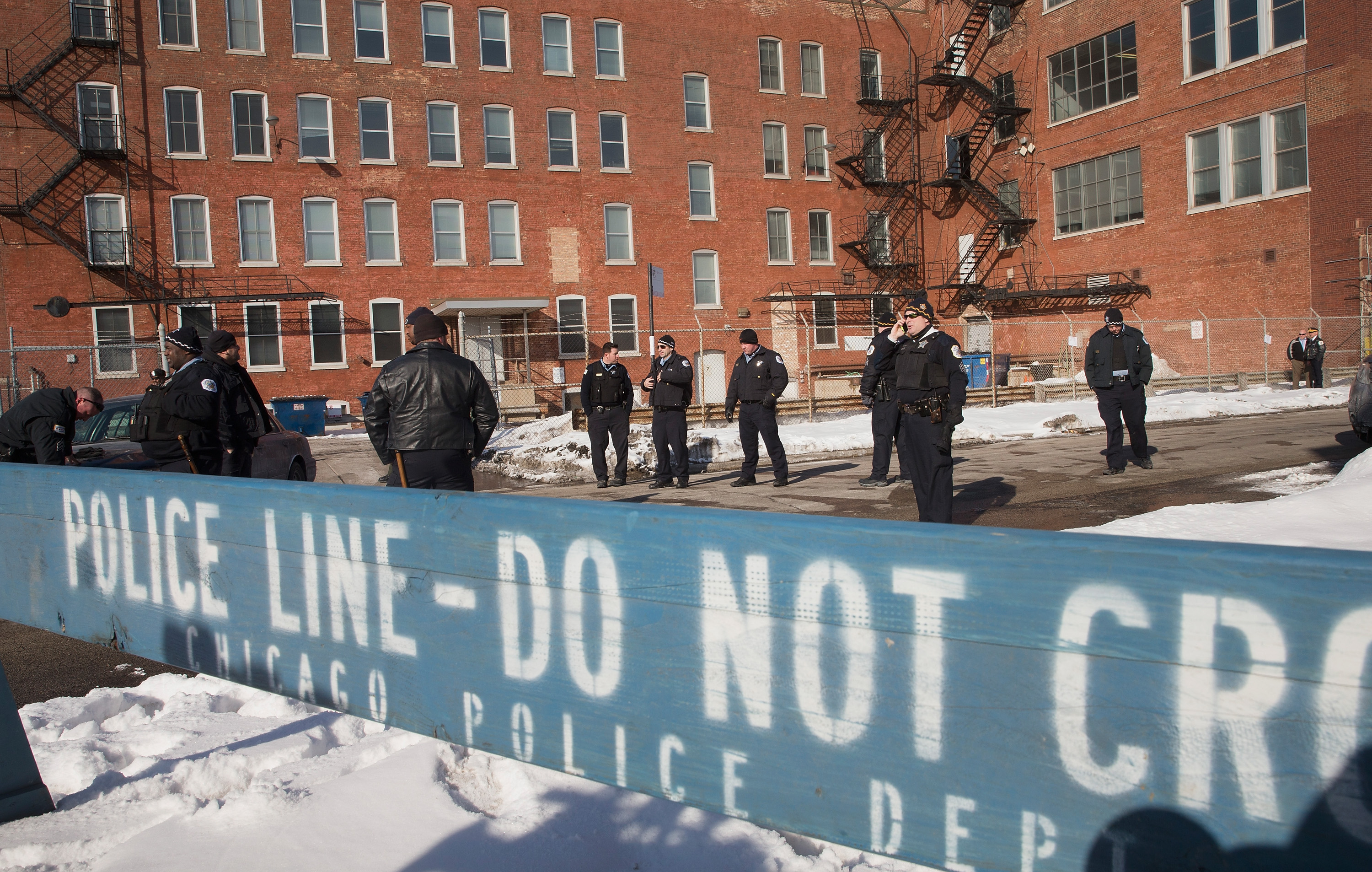
(Getty)
McDonald’s mother said she does not want the video released to the public, according to the Sun-Times. The city’s attorney had said the video will be released at the appropriate time, but not while the investigation is ongoing.
City aldermen have expressed different opinions on the release of the video, including fears that it could incite violent protests in Chicago.
While demanding for the release of the video, Alderman Howard Brookins said the video would “really inflame the passions of the community-at-large,” according to the Sun-Times, but that would be a price the city has to pay in order to move forward.
“I’m not worried about rioting or demonstrations. I need this to stop. If you don’t show the video and this continues to happen, then we’re still headed down that path. . . . It can help us also going forward to come up with policies and practices that will end this once and for all,” Brookins said, according to the Sun-Times. He the video is necessary because police officials “sanitize” the events:
You could just replay old video because it’s always the same thing. You could look at every police report because it always reads the same. Then, you look at the actual video, which dispels what has been said in official written documents and you know that police officers in those limited situations have not been forthright with the community.
According to the Sun-Times, Alderman Carrie Austin said the video would “incite somebody … to do something violent – to rise up in ways that aren’t necessary.” She said:
Some would say that they would rather see it. I think that would be insensitive. Why would you want to even see something like that take place? For you to retaliate is not gonna correct the situation. It has happened. It is done. That individual will receive their punishment. So I don’t think we should go on and on with that . . . It would just distraught somebody to do that. Then, we would lose confidence [of] our citizenry. And I don’t want that to happen. We worked hard to gain their confidence back.
Corporation Counsel Stephen Patton told the aldermen:
I am confident this video will be released. When could depend on whether charges are brought and . . . what the prosecutor or prosecutors have to say about it. . . . If prosecutors say, `We want you to hold off on that because we don’t want to interfere with the prosecution,’ then that would be something we would certainly listen seriously to. But the bottom line is at that appropriate time, this videotape will be released.
Although the settlement with the family bars them from releasing the video, Patton said the $5 million was “not hush money.”
The family’s attorney, Jeffrey Neslund, told the Sun-Times he “agonized” over whether to use the video as a bargaining chip in the negotiations or release it and let it go viral.
“I met with (Laquan’s mother) and Laquan’s uncle, and he was really concerned. He was afraid he would see their neighborhood burned,” Neslund said.
